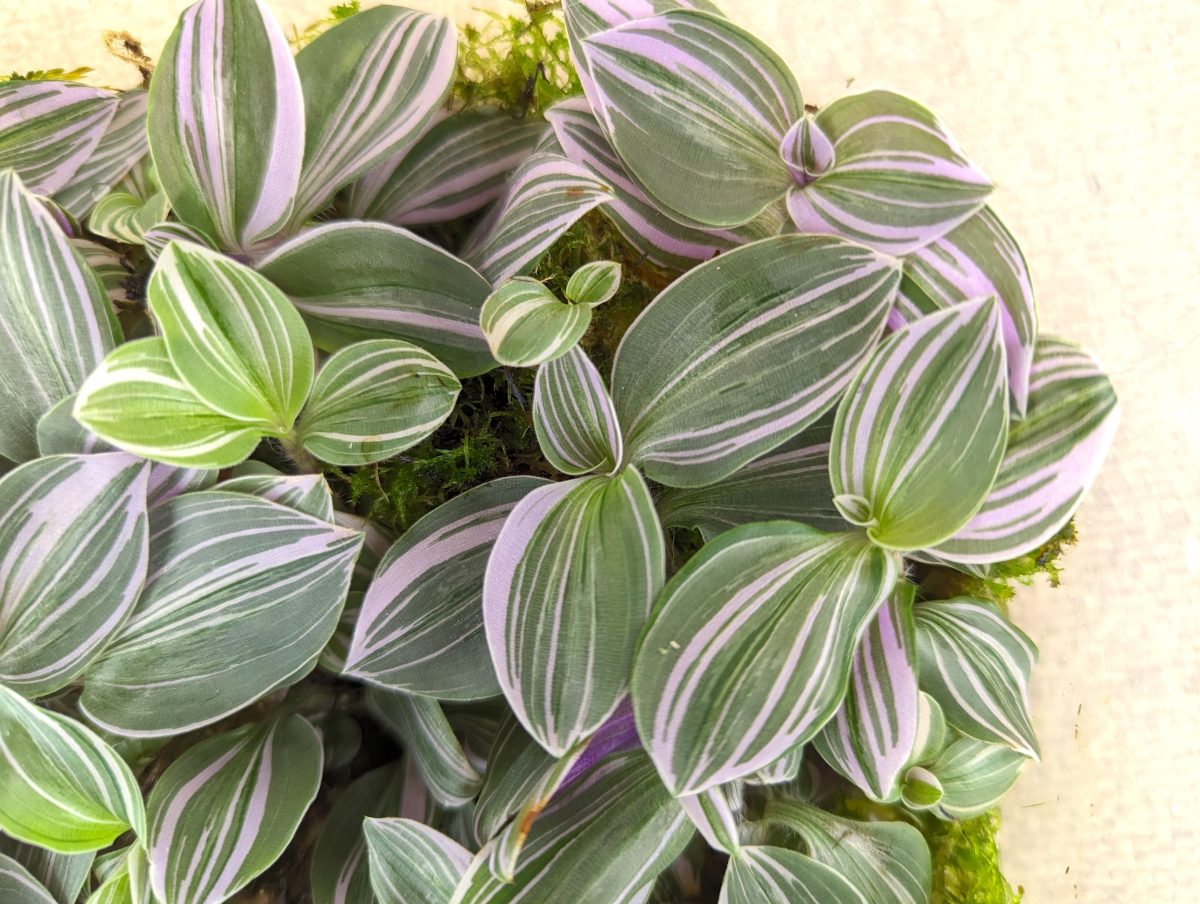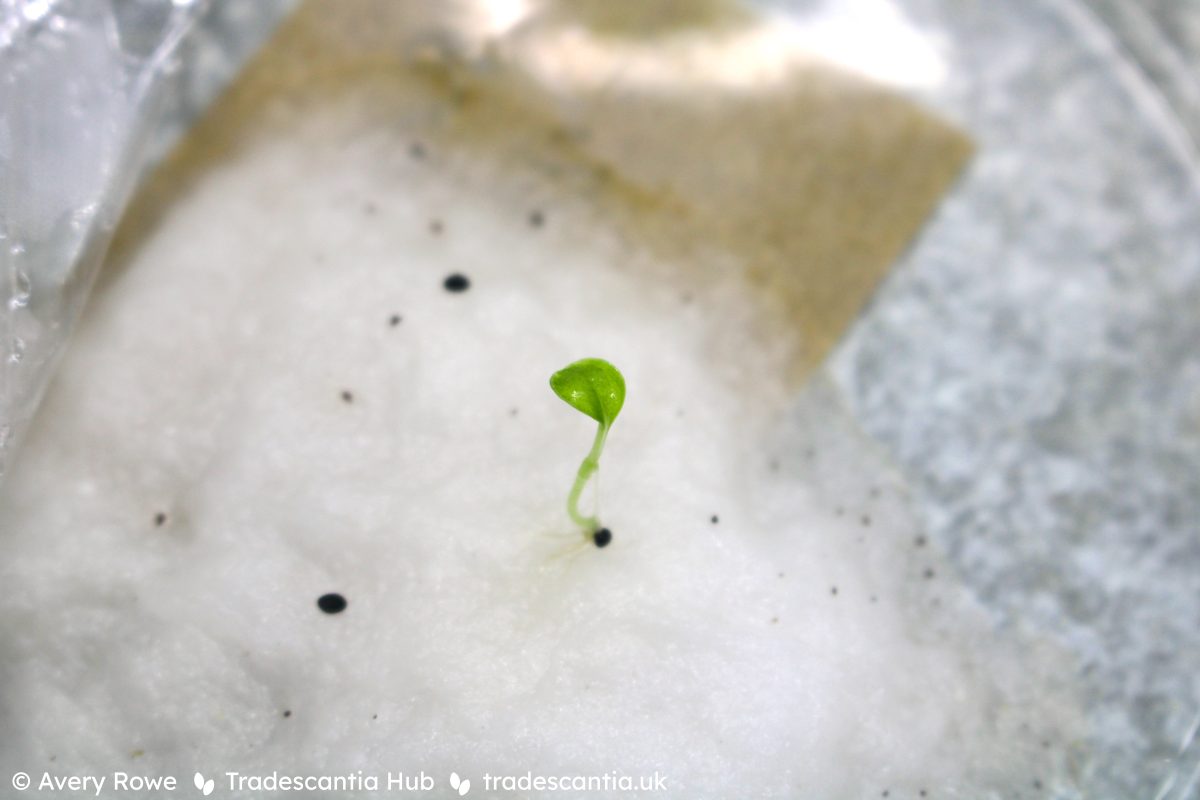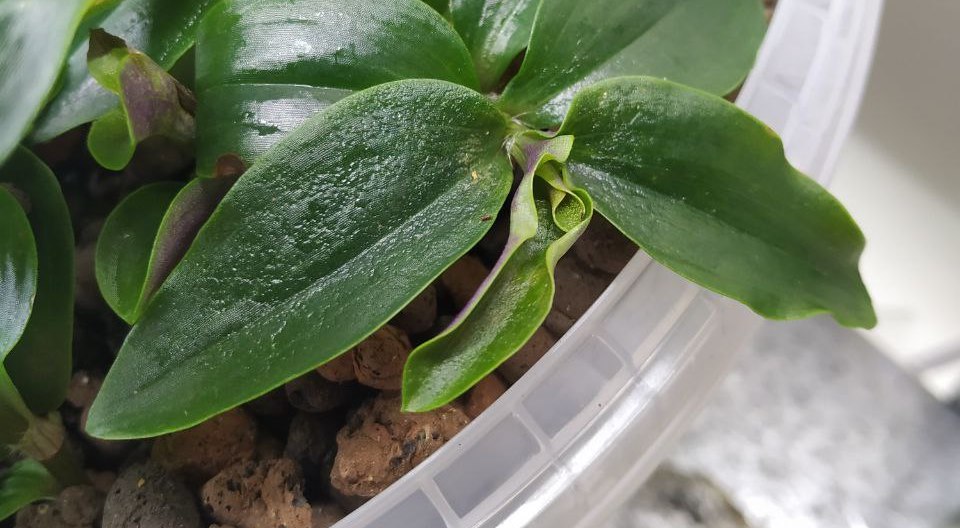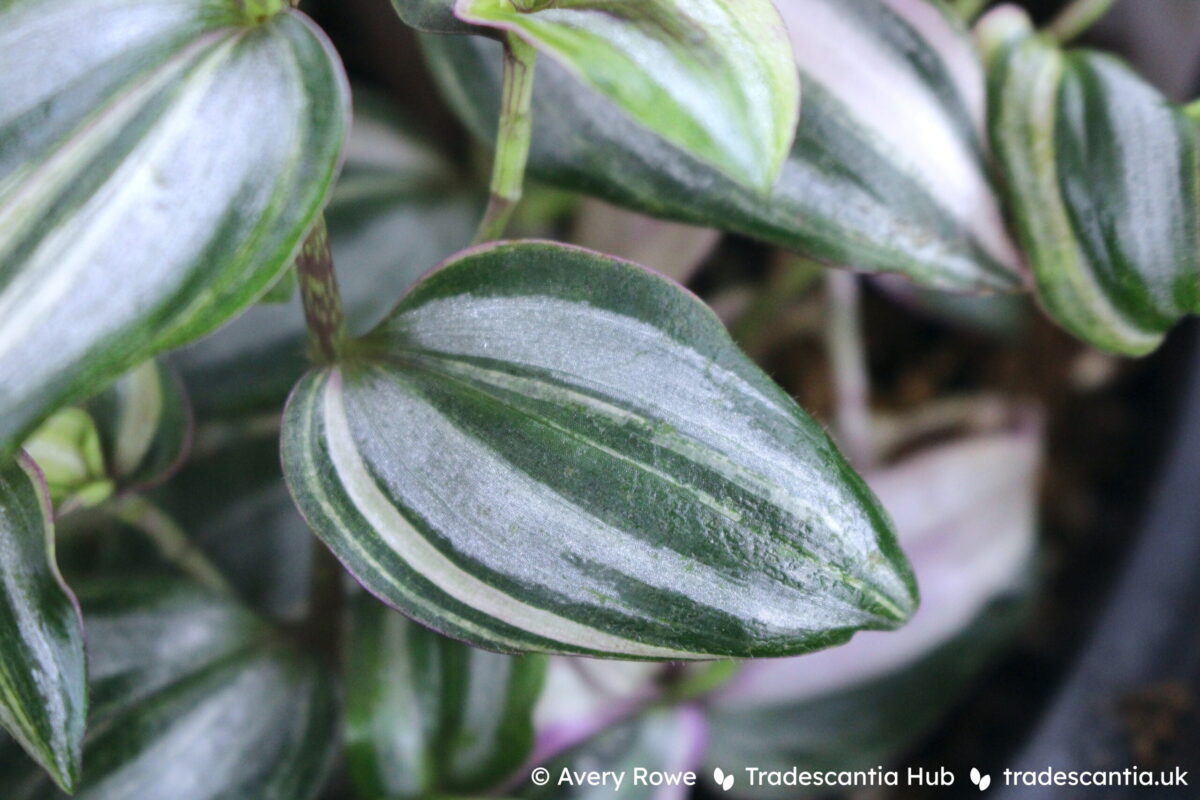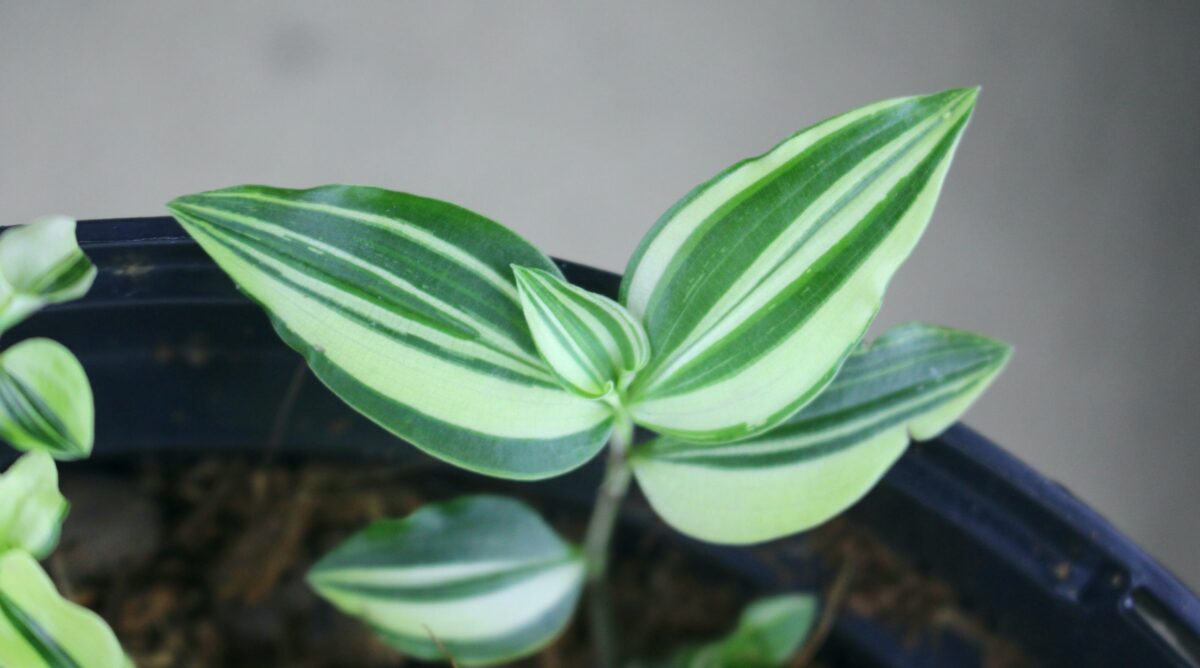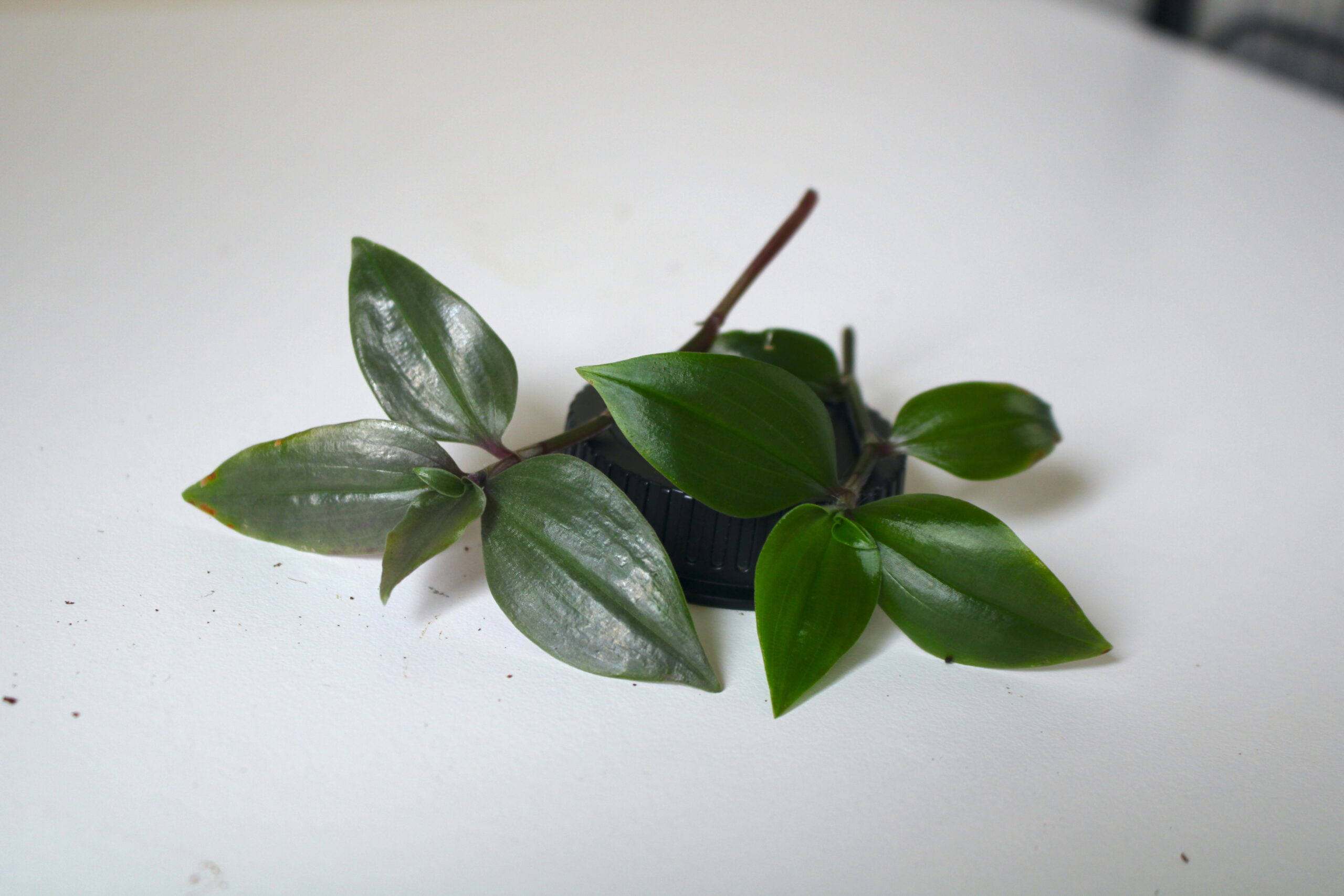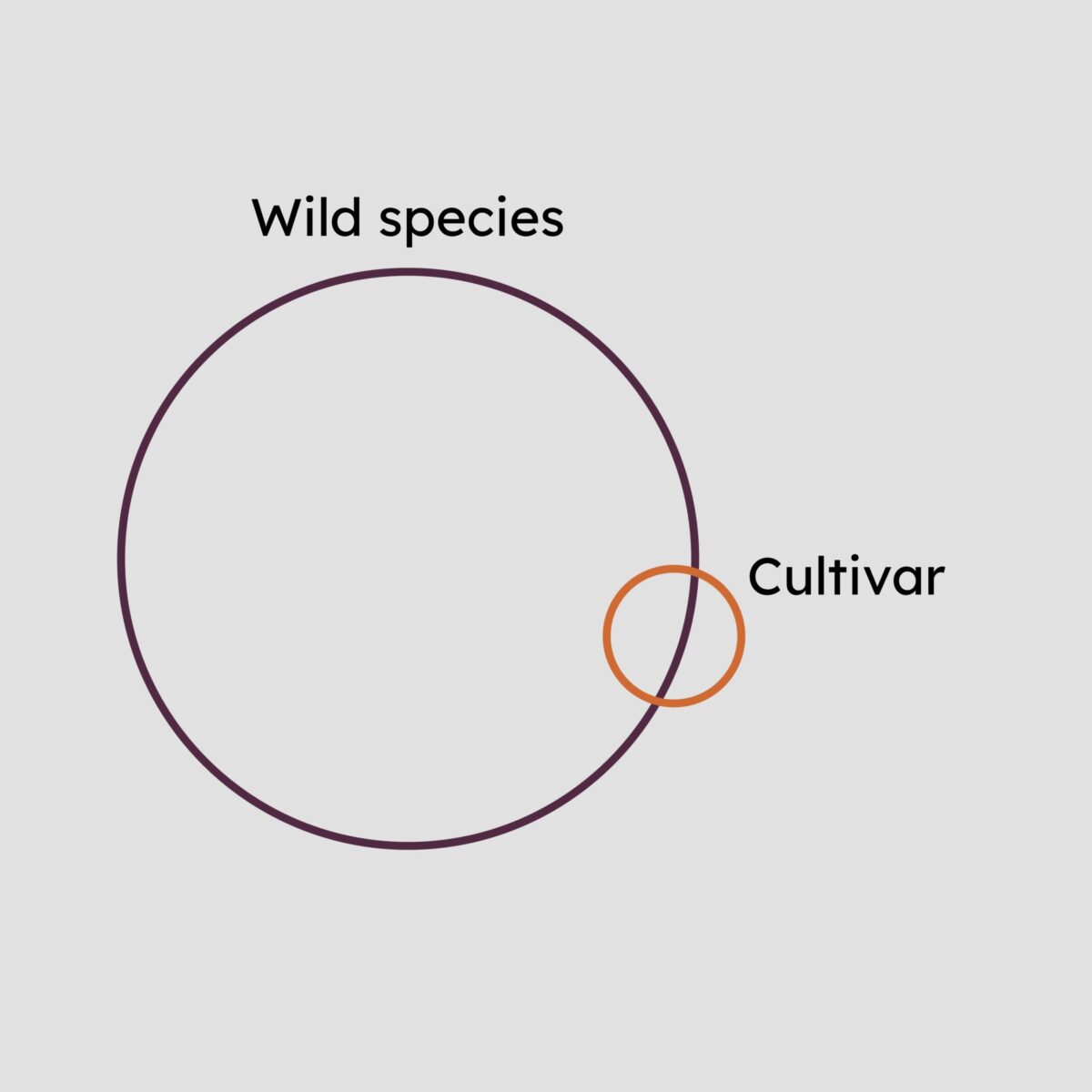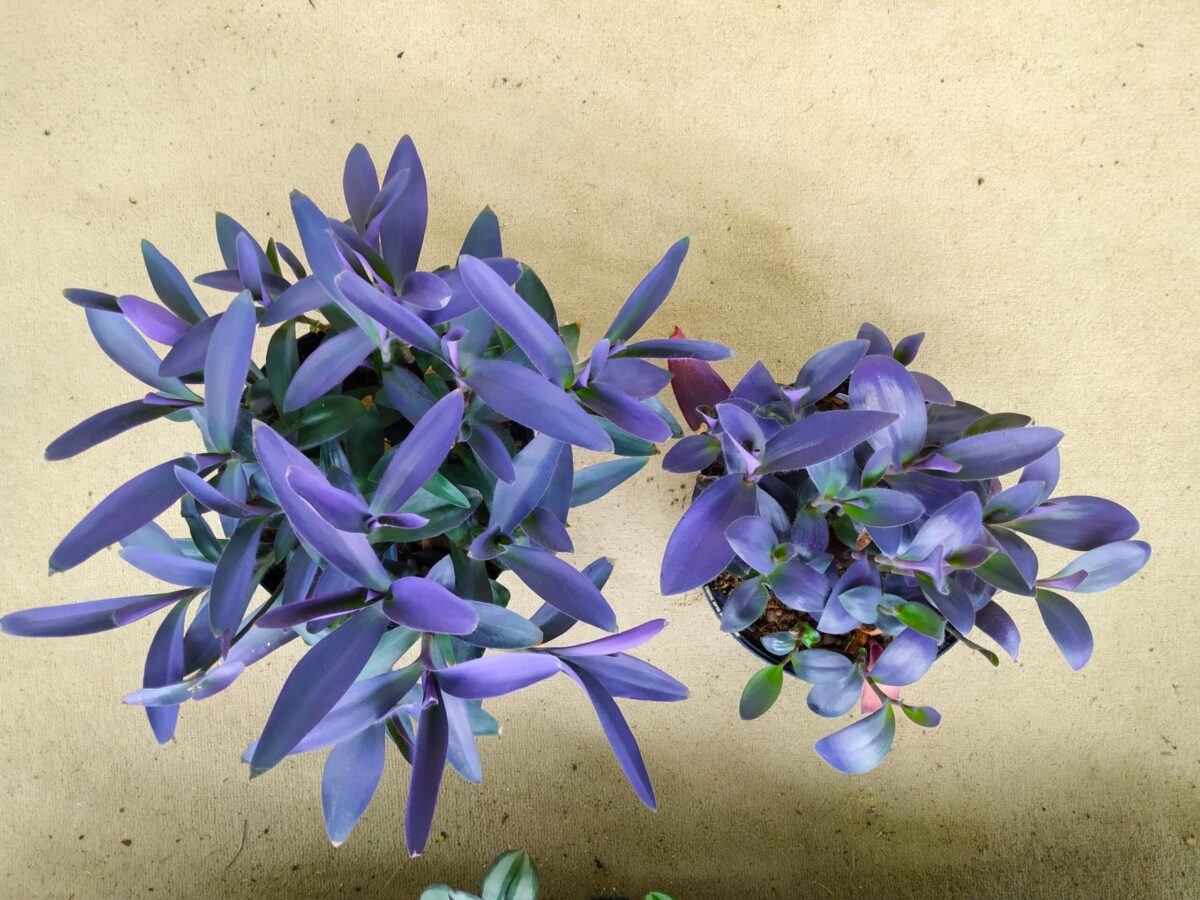Learn the tricks for distinguishing sectoral and marginal variegation in Commelinaceae.
Articles
Growing tropical tradescantia seeds can be difficult and laborious. But if you’re lucky, you could end up making a brand new and beautiful plant.
Thrips are a common problem for Commelianceae houseplants. Learn some tips for spotting the earliest signs, and how to choose a treatment to tackle them.
Find out how to distinguish between the three variegated cultivars of Tradescantia zebrina – ‘Quadricolor’, ‘Discolor Multicolor’, and ‘HappiLee’.
Find out how to distinguish between Tradescantia fluminensis ‘Variegata’ and ‘Yellow Hill’.
Tradescantias are semi-succulents, which means they’re much more tolerant of drought than a lot of plants. It also means that they’re a lot less obvious about it when they eventually do get thirsty. Growing tradescantias as houseplants is very different from having “drama queens” like coleus, nerve plants, and polka dot plants.
In the world of cultivated tradescantias, there are some plants which people refer to as “wild type”. This is a pretty ambiguous term that doesn’t do much to help identify plants – the best approach in these cases is to use cultivar names instead.
You might have noticed some ‘Purple Heart’ plants look different to others. That’s because there are actually two different types!
Sometimes this plant is labelled as Tradescantia × andersoniana ‘Blushing Bride’, and sometimes it’s labelled as Tradescantia fluminensis ‘Maiden’s Blush’. But these names actually refer to two completely different cultivars!
This article is a plain english rewrite of the ninth edition of the International Code of Nomenclature for Cultivated Plants (ICNCP), which is the set of rules about how cultivated plants are named. Because it’s simplified, some information has been left out. This version is aimed at people who are naming new plants, or who […]

